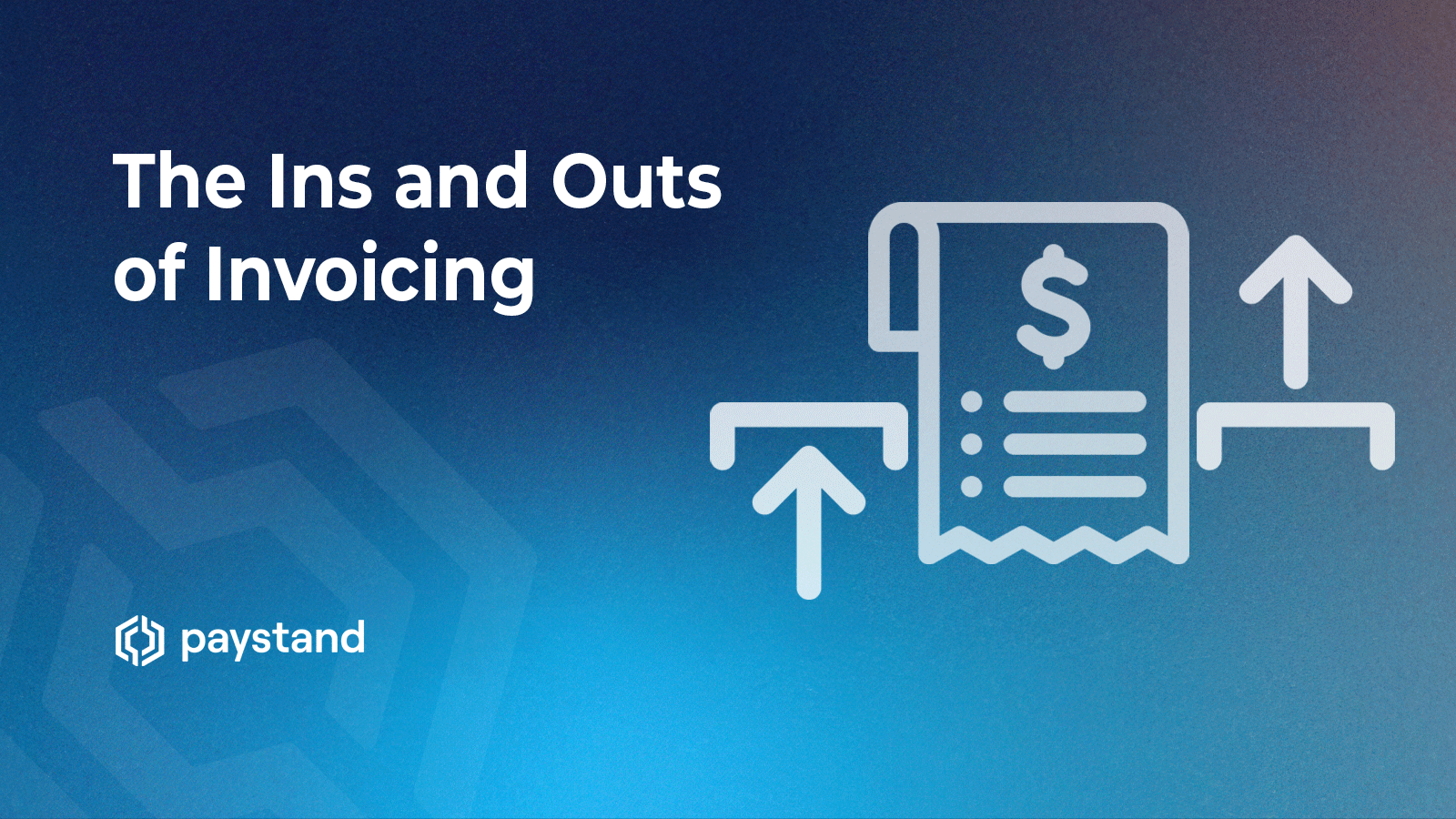The Ins and Outs of Invoicing

Invoicing is an inevitable part of running a business — you need your customers, clients, and vendors to pay you, and you need to give them all the information they need to do so. Enter invoicing.
Since invoicing is such a systematic process, it becomes familiar to us. And when something becomes familiar to us, we can develop “blind spots” from leaning on bad habits and shortcuts we’ve learned over the years. Even masters have questions about their craft. So, whether you’re a pro or new to invoicing, this guide will help answer some of the most commonly asked and frequently missed questions. Plus, a handy cheatsheet for the best practices for invoicing clients.
What Does Invoicing Mean, How Does it Work, and Why is it Important?
What does invoicing mean?
Let’s bring it back to basics for a moment. An invoice is a time-stamped document maintaining a transaction record between buyer and seller. When invoicing a client, customer, or vendor, you request due payment and enable your buyer to provide that payment.
How does invoicing work?
Once an invoice has been created and sent to the customer electronically or physically, your client will remit payment to your business via their preferred and accepted payment method. Once your accounting department receives payment, they will apply and reconcile the payment, ensuring your accounts receivables are nice and tidy.
An invoice should include:
Invoices often vary by vendor or contractor, depending on the business, industry, and goods and/or services rendered. However, all invoices should include at least the following five components:
1. Invoice number
An invoice number establishes a paper trail for both your and your customers’ accounting records.
Tip: Assign invoice numbers sequentially to make it easier to keep track of essential invoices and accounting information
2. Date
The date shows the time and date the vendor officially records the transaction and bills the client. This is a crucial piece of information because it dictates the payment due date and credit duration.
3. Business contact information
It might seem like a given, but it’s easier than you think to forget to include all the required information. Your customers need to know how and where to pay you and contact you if they need to, so you’ll want to include your business name, address, phone number, email address, and your client’s information.
Tip: Utilize an invoice template that includes your business name and contact information in the header
4. Description of goods and/or services
Each product or service you provide should be entered as a line item on your invoices, including the price and quantity for each line item. Add up all of the line items and apply any tax charges at the bottom of the invoice. You’ll want to include:
- The date you completed the service
- Brief description of services specifying what your company provided
- How many units were ordered
- Rate per unit
- Total number of units
- Total amount due
- Any applicable tax
5. Payment terms
Specify the amount of time the customer has to pay for the agreed-upon service or purchase. Net 30 days is one of the most common payment terms, but you’ll want to choose payment terms that work best for your business and increase your likelihood of being paid on time, in full.
Why is invoicing important?
Running a business requires a healthy cash flow, and invoicing enables you to request payment from buyers quickly, easily, and with all the required information. Further, a comprehensive, B2B Payment Automation can enable you to put your accounts receivable on auto-pilot, leveraging automation and blockchain technology.
Demystifying Common (and some not-so-common) Questions
Can invoices be handwritten?
Whether you’ve received a handwritten invoice and have some questions or concerns, or your computer has died, and you need to get an invoice to somebody ASAP, the answer is simple: As long as it contains all the necessary information, an invoice can be handwritten. While an acceptable form of invoice, handwriting invoices is time-consuming and increases the risk of errors. Automated, digital invoicing ensures your invoicing process runs smoothly and accurately every time.
Are invoices legally binding?
No, invoices are not legally binding. Invoicing is a crucial accounting practice, but an invoice is not a legal document on its own, as there’s no proof on the invoice itself that both parties have agreed to its terms. A legally binding contract covers all the legal bases an invoice on its own does not. Your contract must meet these two requirements to be a legal document:
- All parties involved agree to an offer made by one party and accepted by the other.
- Something of value must be exchanged for something of value, i.e., goods, services, and cash.
What’s the difference between invoicing and billing?
Invoicing = seller collects payment for products or services at a later date
Billing = seller collects payment for products or services immediately
8 Best Practices for Invoicing Customers
- Call it an invoice
- Identify yourself
- Address the client
- Include invoice information
- Clarify dates
- Specify payment terms and options
- Bold the invoice total
- Have a detailed, itemized list
Fast, Easy, Automated Invoicing? No Problem!
Paystand enables you to make collections a revenue engine, driving more efficiency across your AR organization with automated invoicing and collections. Paystand offers embedded payment links, multiple payment rails, our zero-fee Paystand Bank Network, a Payer Incentives model that enables you to promote your preferred payment options among your customers, and automated cash application and reconciliation.




